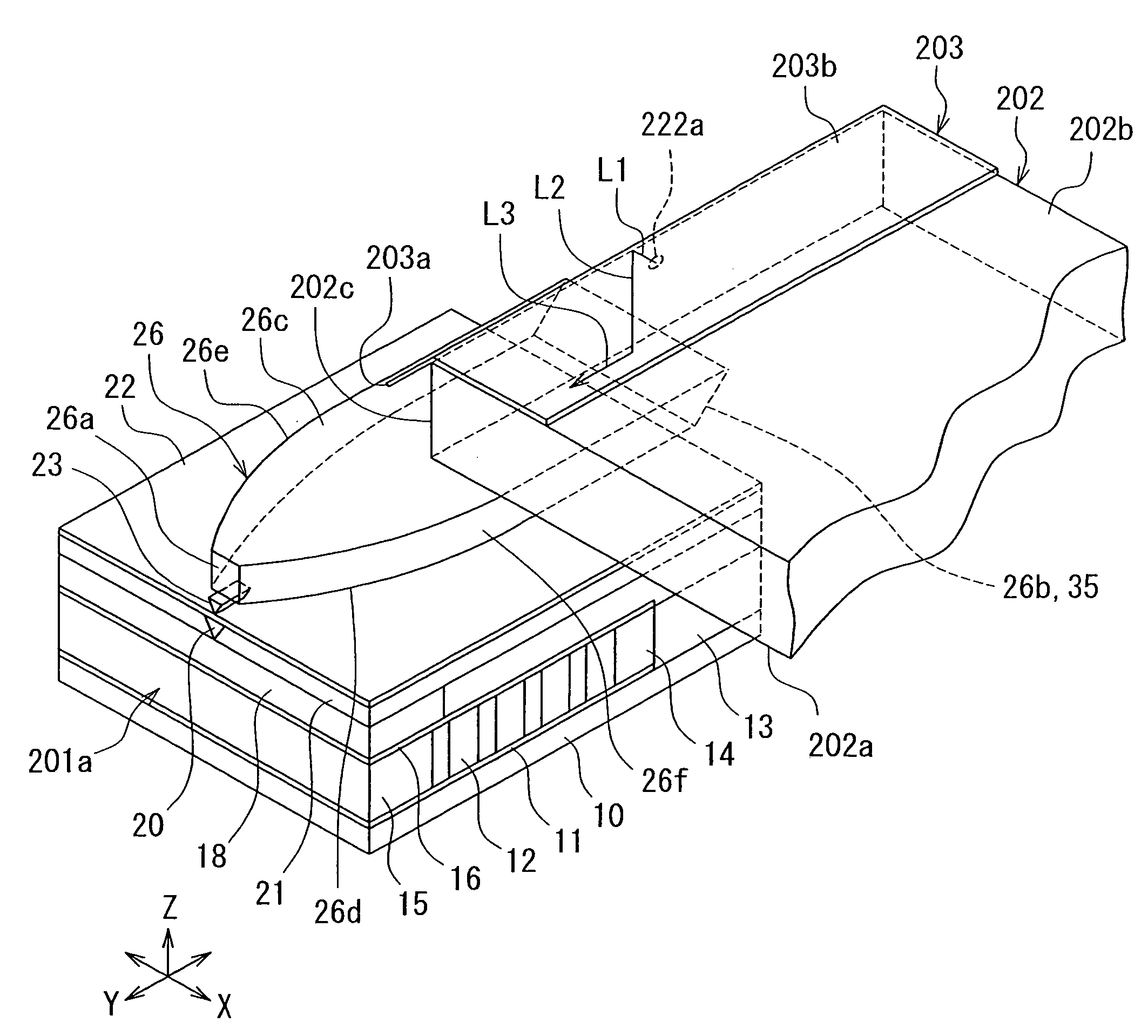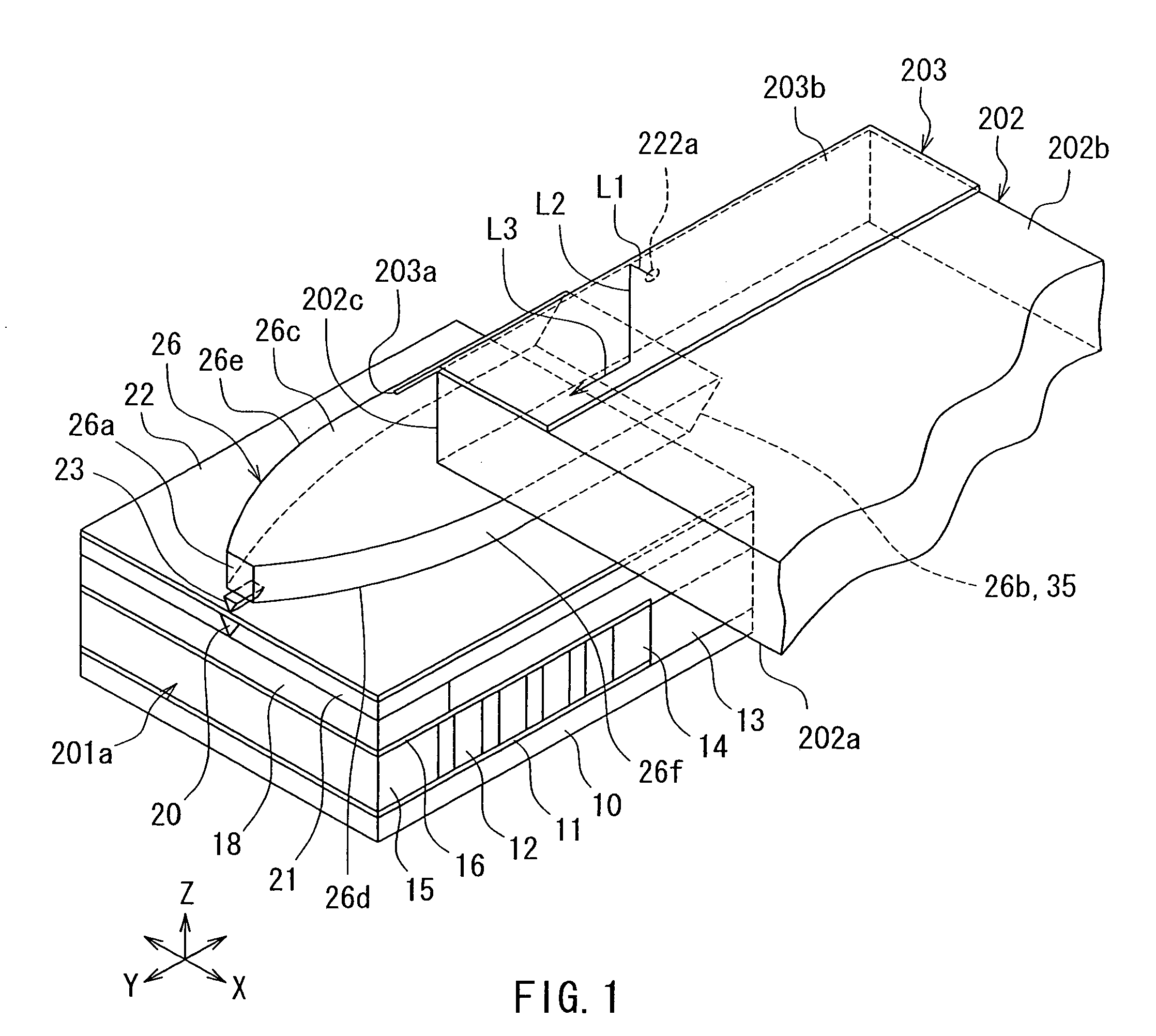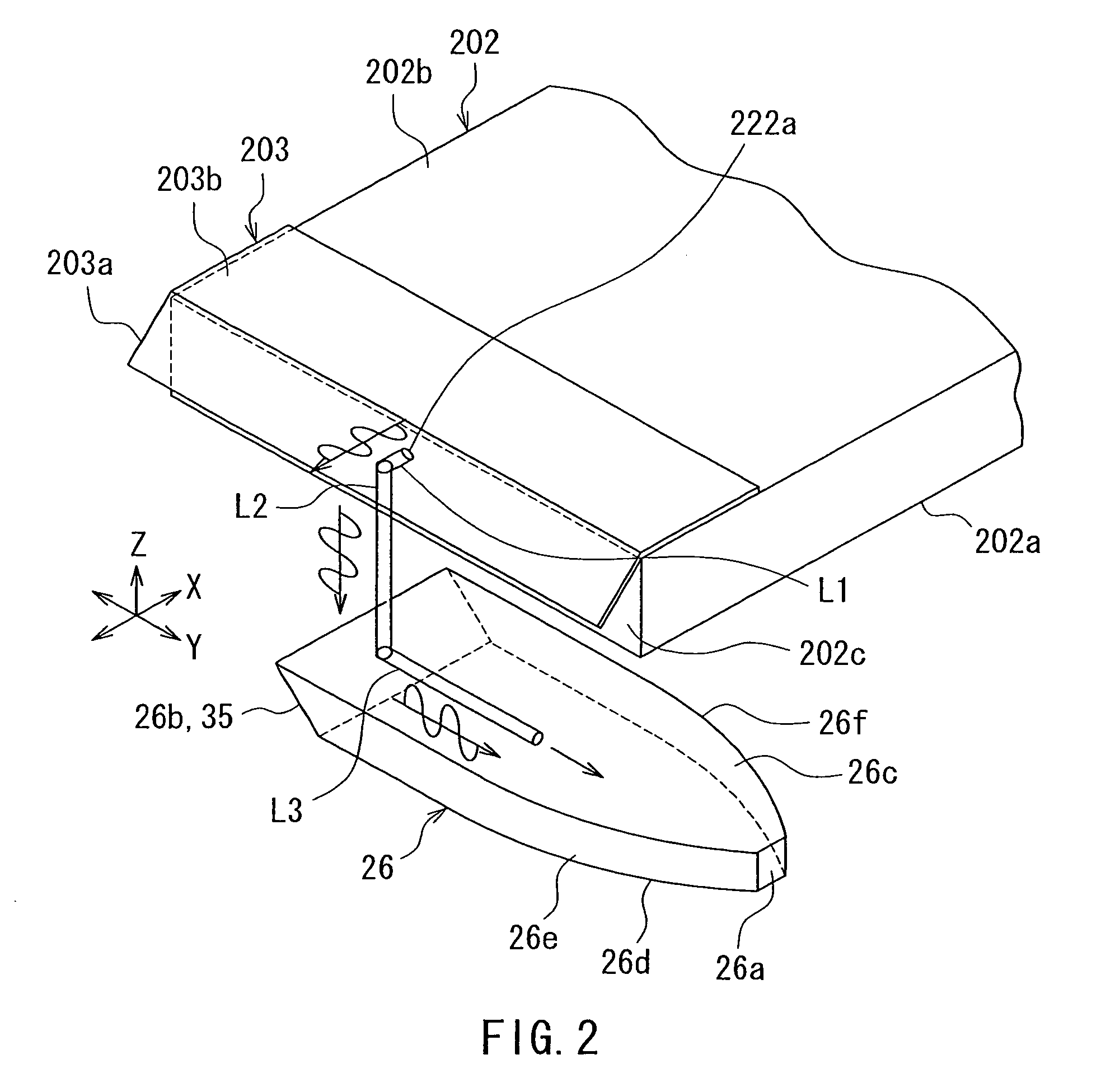Heat-assisted magnetic recording head with laser diode fixed to slider
a laser diode and magnetic recording technology, applied in the field of heat-assisted magnetic recording head, can solve the problems of increasing the coercivity of the recording medium, reducing the thermal stability of the magnetization of magnetic fine particles, and difficult to perform data recording with existing magnetic recording head, etc., to achieve the effect of easy laser light alignmen
- Summary
- Abstract
- Description
- Claims
- Application Information
AI Technical Summary
Benefits of technology
Problems solved by technology
Method used
Image
Examples
first embodiment
[0059]Preferred embodiments of the present invention will now be described in detail with reference to the drawings. Reference is first made to FIG. 4 and FIG. 5 to describe a heat-assisted magnetic recording head and a magnetic disk drive according to a first embodiment of the invention. FIG. 4 is a perspective view of the heat-assisted magnetic recording head according to the present embodiment. FIG. 5 is a plan view of the heat-assisted magnetic recording head as viewed from the direction A of FIG. 4.
[0060]The magnetic disk drive of the present embodiment incorporates the heat-assisted magnetic recording head 200 according to the present embodiment. The heat-assisted magnetic recording head 200 is supported by a not-shown suspension and is disposed to face a circular-plate-shaped recording medium (magnetic disk) that is driven to rotate. In FIG. 4 and FIG. 5 the X direction is a direction across the tracks of the recording medium, the Y direction is a direction perpendicular to t...
second embodiment
[0137]A heat-assisted magnetic recording head according to a second embodiment of the present invention will now be described with reference to FIG. 22 to FIG. 26. FIG. 22 is a perspective view showing the main part of the heat-assisted magnetic recording head 200 according to the present embodiment. FIG. 23 is a perspective view showing the positional relationship between the laser diode 202, the external mirror 203, the internal mirror 35, and the waveguide 26 of FIG. 22, and the direction of polarization of laser light. FIG. 24 is a perspective view of the heat-assisted magnetic recording head 200 according to the present embodiment. FIG. 25 is a plan view showing the heat-assisted magnetic recording head 200 as viewed from the direction A of FIG. 24. FIG. 26 is a cross-sectional view showing the configuration of the slider 201. FIG. 26 shows a cross section taken along line 26-26 of FIG. 25.
[0138]In the present embodiment, as shown in FIG. 22 to FIG. 26, the laser diode 202, the...
third embodiment
[0141]A heat-assisted magnetic recording head according to a third embodiment of the present invention will now be described with reference to FIG. 27 and FIG. 28. FIG. 27 is a perspective view showing a laser diode and an external mirror of the present embodiment. FIG. 28 is a cross-sectional view showing the laser diode, the external mirror and an internal mirror of the present embodiment.
[0142]The heat-assisted magnetic recording head according to the present embodiment has a laser diode 302 and an external mirror 303 shown in FIG. 27 and FIG. 28 instead of the laser diode 202 and the external mirror 203 of the first embodiment. As shown in FIG. 27, the laser diode 302 of the present embodiment has the same configuration as that of the laser diode 202 of the first embodiment. Nevertheless, the laser diode 302 is fixed to the top surface 201c of the slider 201 in a vertically inverted orientation relative to the laser diode 202. More specifically, the laser diode 302 includes: an ...
PUM
 Login to View More
Login to View More Abstract
Description
Claims
Application Information
 Login to View More
Login to View More - R&D
- Intellectual Property
- Life Sciences
- Materials
- Tech Scout
- Unparalleled Data Quality
- Higher Quality Content
- 60% Fewer Hallucinations
Browse by: Latest US Patents, China's latest patents, Technical Efficacy Thesaurus, Application Domain, Technology Topic, Popular Technical Reports.
© 2025 PatSnap. All rights reserved.Legal|Privacy policy|Modern Slavery Act Transparency Statement|Sitemap|About US| Contact US: help@patsnap.com



